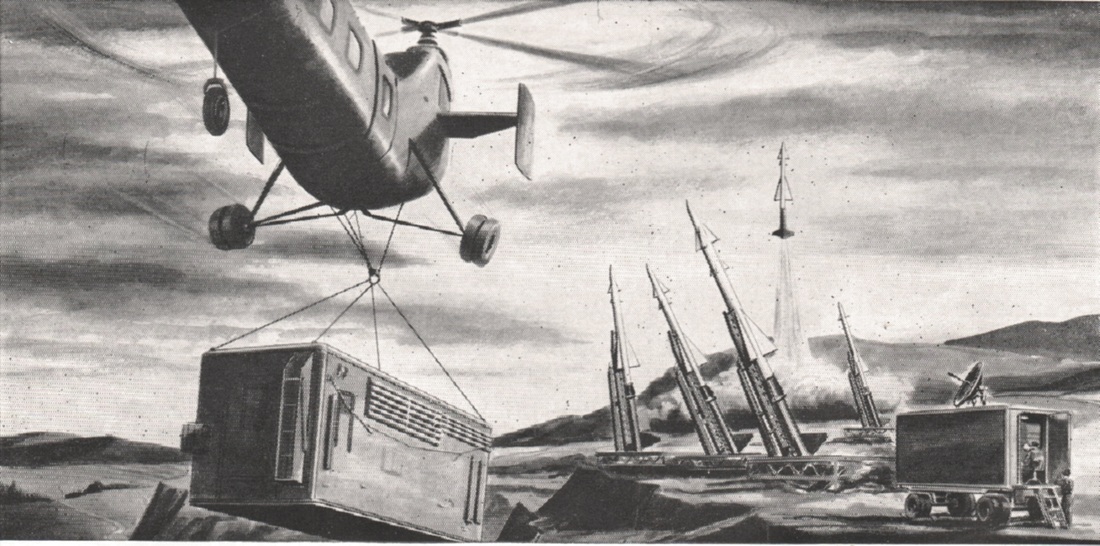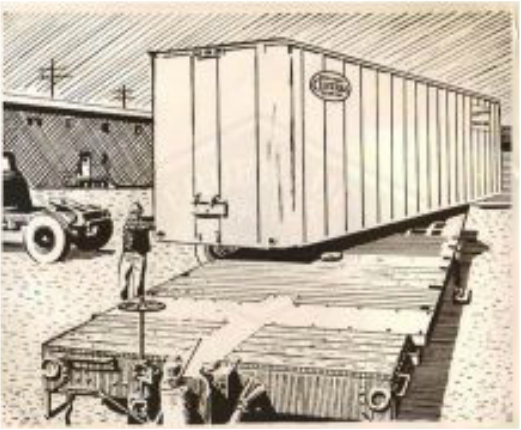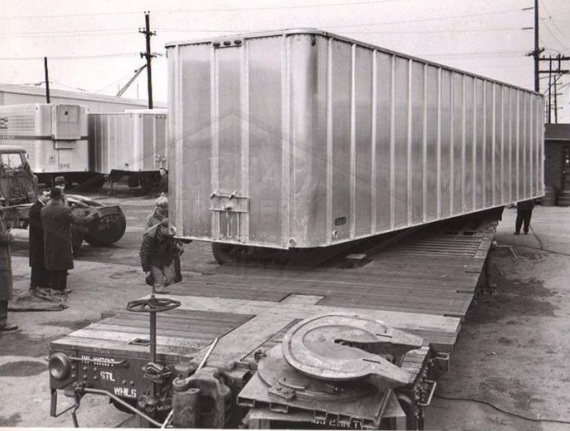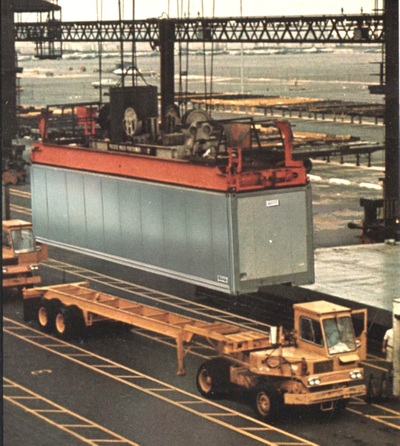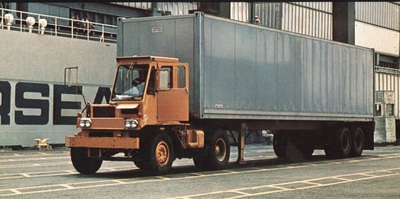Fruehauf's research and development teams paved the way for the shipping container in the early 1950s
By the early 1950s
In 1955, Fruehauf partnered with the NY Central Railroad on an innovative concept which laid the foundation for today's shipping containers. Progressive designs and unique engineering contributed to Fruehauf Trailer's reputation for quality and innovation. The Fruehauf Flexivan introduced shipping concepts which were revolutionary in the 1950s.
The New York Central Railroad needed a new concept in intermodal to help escape its desperate cash-short state in the 1950's. Several concepts were reviewed, including the Ryan/EMD Trailer Transport system, C&O's Rail Van and the Steadman side loader, as well as a system developed jointly with Malcolm McLean. The one that was finally decided upon was FlexiVan. Strick Division of Fruehauf developed an experimental car in 1955. They delivered an old 42 foot flatcar with a new single, hydraulically-operated turntable powered by a motor-driven pump. Power was supplied by the terminal tract units.
The experimental car worked as designed. The Strick van backed at right angles to the flatcar until its bottom rails lined by with the car's turntable mechanism. The driver then unlocked a pin in the demountable bogies, and backed the van off the wheels and into slots on the turntable. When the van was fully engaged on the turntable, a pin locked it in place. Using a push rod mounted on the Commando hostler unit, the driver engaged the van, pushed it 90 degrees until it paralleled the flatcar and locked into place on the car.
FRUEHAUF'S IMPACT ON THE WORLD-WIDE TRANSPORTATION AND SHIPPING INDUSTRY CONTRIBUTED TO THE EXPANSION OF THE U.S. ECONOMY
"The production cars contained a double turntable, capable of handling two 40-foot vans with or without nose-mounted reefer equipment. They were a skeletonized frame car. The lighter container (minus running gear) saved almost a quarter of the car and van fare weight of a standard pig flat with trailer. The lower center of gravity and reduced wind resistance, also paid dividends in the high-speed FlexiVan trains. In a joint test with Santa Fe Railroad in October 1966, it was found that depending upon speed, the FlexiVans produced a five to ten percent savings in rolling resistance."
- Piggyback and Containers - A History of Rail Intermodal on America's Steel Highway, by David J. DeBoer, Golden West Books, p 63-65.
- Piggyback and Containers - A History of Rail Intermodal on America's Steel Highway, by David J. DeBoer, Golden West Books, p 63-65.
Partnership with Malcolm McLean and Sea Land Shipping
The following audio conversation was held between Fruehauf's Senior Engineer, Jim Schulz and Ruth Fruehauf in 1914. Jim recounts his early days working for Fruehauf in the 1950s and how they participated in the creation of the shipping container.
*Special thanks to Greg Ennis for his help editing this audio file.

